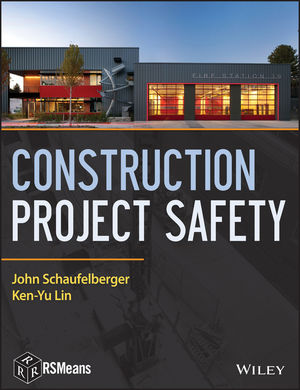Construction can be a gratifying career. It also comes with many potential risks companies must be aware of and accommodate accordingly. Some dangers are to be expected, but these four hazards pose a more significant threat to women than men. Construction managers should ensure female workers are safe on the job by focusing on these issues.
Ill-fitting PPE
Women are issued the same personal protective equipment (PPE) as men, but it's often less safe. It must fit adequately to be most effective, but women's bodies differ from men’s.
About 77% of women face unnecessary exposure to safety hazards due to ill-fitting PPE, including chemical inhalation, eye damage and falls.
Women are more vulnerable to the fatal four construction accidents. They're more likely to slip out of fall protection harnesses that aren’t tight enough. Loose safety goggles lead to debris and chemicals getting underneath the lenses. A poor-fitting hard hat could be useless because a falling item could knock it off. Therefore, a woman would be more likely to suffer a head injury since her skull could rattle around in the hat.
Loose-fitting vests, gloves and other protective clothing are another problem. The Occupational Health and Safety Administration requires all on-site employees to wear PPE. However, loose items can get caught in machinery and hinder someone's mobility, which is unacceptable in hazardous conditions. Women might remove PPE that gets in the way, leaving them vulnerable to injury.
All construction workers need properly fitting PPE to work on a site confidently and productively.
Heat-related illnesses
More than one-third of worksite deaths in the United States are caused in part by heat. Prolonged exposure to high temperatures can be deadly. Most heat-related deaths on construction sites happen on the worker’s first day, so they should be aware of vital safety measures. Construction workers are at a higher risk of heat-related illnesses due to materials and tools holding more heat than is in the air.
Research shows that women are nearly four times as likely to be heat intolerant than men. There’s debate over why, but experts believe they are more sensitive to nociceptive stimuli — making them more susceptible to both hot and cold.
The lack of safety measures can lead to heat exhaustion and heat stroke, with the latter causing fatalities. Since women are less likely to complain about working conditions than men, they’re more likely to ignore the warning signs of heat exhaustion like dizziness, nausea and excessive sweating. Without cooling down and resting, these symptoms can turn into heat stroke.
Someone who stops sweating, gets confused or falls unconscious urgently needs emergency medical care. At that point, the body stops regulating its temperature, which makes heat stroke deadly.
Construction companies can help women and all workers avoid heat exhaustion and stroke by providing an abundant supply of cold water and electrolytes on hot days, encouraging people to rest when needed and providing shady areas to relax in. Creating a workplace culture that minimizes judgment about taking that time is crucial for women to feel comfortable doing so in a male-dominated workplace.
Bladder problems
Most portable work site restrooms aren’t suitable for women to use. They’re either just a urinal or have unsanitary toilets that pose a threat for infection. According to OSHA, these issues make women drink less water to avoid having to urinate, but that is unsafe.
Dehydration puts someone at a higher risk for heat-related illnesses and can lead to kidney damage and infection. It’s harder for kidneys to filter waste when the body doesn’t have enough water. It also can cause a buildup of bacteria in the urinary tract.
Women are also more likely to hold in urine until the end of their shift. Bacteria can multiply when urine stays in the body too long, causing a urinary tract infection. Someone prone to UTIs can end up with a severe illness.
Holding urine long term means the bladder stretches to its maximum capacity, which can cause it to back up into the kidneys. It also makes it less likely for the bladder to return to its typical size when emptied. A stretched bladder could eventually lead to inelasticity, requiring women to need diapers or a catheter as they age.
Not urinating enough can cause weakness in the pelvic floor. That weakness can lead to cramping and bladder leaks, making working on a site challenging. While Kegel exercises can help, going to the bathroom every three to four hours reduces stress on the bladder.
Holding in urine can cause a buildup of uric acid and calcium oxalate, which can cause kidney stones. These are painful and could lead to severe complications, including a blocked or damaged ureter and sepsis. You’re more likely to get kidney stones if you had them previously.
Providing appropriate and clean portable restrooms and maintaining them on-site can lessen these problems.
Mental health conditions
Mental health is a top concern for all construction workers, but culture and genetics can make women more susceptible to depression, anxiety and other conditions.
Long shifts, uncertain employment and intense working conditions can lead to physical and mental strain. Construction workers can suffer from burnout, insomnia and severe stress. More employees die from suicide each year than on-site accidents.
The stigma around mental illness and unsupportive co-workers can discourage people from seeking treatment. The idea that women must “prove themselves” can prevent them from speaking up when struggling.
Women are three times more likely to experience mental health symptoms than men. Societal pressure plays a huge role, but genetics can also be a component. Research shows that up to 50% of a diagnosed major depressive disorder could be genetic. Anxiety is also more likely to get passed from mother to daughter.
Maternity leave policies can also impact a woman’s mental health. While men can also struggle with going back to work too soon after welcoming a baby, mothers have hormonal changes that can contribute to postpartum depression and anxiety. The stress from having a newborn at home can exacerbate those conditions. The United States is one of the worst countries for providing parental leave.
Systemic changes, having a no-tolerance harassment policy and creating support can improve mental health for all — especially women.
Creating a fair industry for all
Women deserve to feel safe in the construction industry. If they can complete a job as well as a man, they should have the resources to comfortably perform their duties without risking their physical or mental health. The industry can improve the environment for everyone working within it by making small changes.










